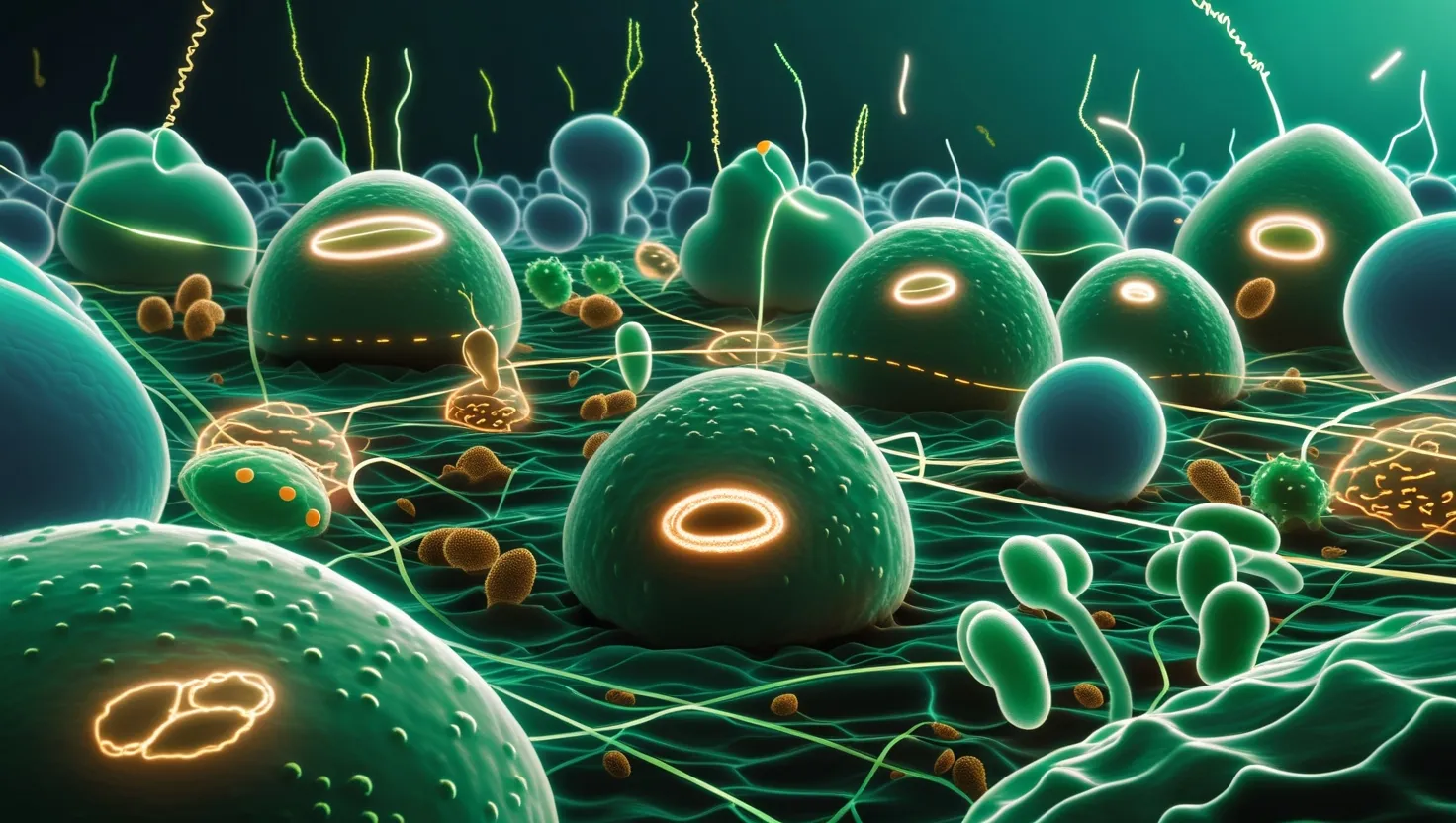In the microscopic world, bacteria are not solitary entities; they live in complex societies, communicating and coordinating their actions through a sophisticated system known as quorum sensing. This phenomenon is akin to a social network, where bacteria exchange chemical signals to regulate a wide range of behaviors, from the production of virulence factors to the formation of biofilms.
Imagine a city of microorganisms, each bacterium acting as an individual citizen, but collectively behaving like a well-organized community. This is essentially what quorum sensing enables. Bacteria release small molecules called autoinducers, which diffuse through their environment and are detected by other bacteria. As the concentration of these autoinducers increases, it signals to the bacteria that they have reached a critical population density, triggering a coordinated response.
One of the most fascinating aspects of quorum sensing is its role in biofilm formation. Biofilms are communities of bacteria that adhere to surfaces and are embedded in a protective matrix. These biofilms are notoriously difficult to eradicate and are a major concern in healthcare, as they can lead to chronic infections and antibiotic resistance. Quorum sensing plays a central role in the development and maintenance of biofilms, allowing bacteria to coordinate their activities and create a resilient, collective defense against external threats.
For instance, the bacterium Pseudomonas aeruginosa, often found in hospital environments, uses quorum sensing to regulate the production of virulence factors and biofilm components. This bacterium employs multiple quorum sensing systems, including the LasR-I and RhlR-I circuits, which work in a hierarchical manner to control various behaviors. This complex communication network allows P. aeruginosa to adapt to different environments and outcompete other bacterial species.
The impact of quorum sensing extends beyond the realm of individual bacterial species; it influences interactions between different types of microorganisms and even between bacteria and their hosts. For example, Chromobacterium violaceum uses quorum sensing to produce antimicrobial compounds like violacein, which can affect the behavior of other bacteria and even eukaryotic cells such as yeast and immune cells. Disrupting this quorum sensing system can significantly alter the social interactions between these microorganisms, highlighting the intricate web of communication that exists in microbial communities.
Researchers have been exploring ways to disrupt quorum sensing as a potential strategy to combat bacterial infections. This approach, known as quorum quenching, involves using enzymes or chemicals to degrade or block the autoinducers. For example, lactonases are enzymes that can break down acyl-homoserine lactones (AHLs), a common type of autoinducer used by many Gram-negative bacteria. By targeting these AHLs, scientists can disrupt the quorum sensing system, reducing the virulence of pathogenic bacteria and their ability to form biofilms.
One promising area of research involves the discovery of natural compounds that can act as quorum quenching agents. For instance, plakofuranolactone, a molecule isolated from a marine sponge, has been shown to block the quorum sensing system of P. aeruginosa, reducing its virulence. This discovery opens up new avenues for the development of novel antimicrobial therapies that do not kill bacteria outright but instead render them less harmful by disrupting their communication networks.
The study of quorum sensing also challenges our traditional understanding of bacterial behavior. Instead of viewing bacteria as individual cells, we now recognize them as part of complex societies that cooperate and compete with each other. This perspective has significant implications for our approach to treating infections and managing microbial communities in various environments.
In addition to its medical applications, quorum sensing research has important implications for environmental science. For example, understanding how bacteria communicate in soil and freshwater ecosystems can help us develop strategies to enhance soil health and prevent the spread of pathogenic bacteria in aquatic environments. By manipulating quorum sensing systems, we can potentially enhance the beneficial activities of certain bacteria, such as the production of antibiotics or the degradation of pollutants.
The concept of quorum sensing also offers a unique lens through which to view the natural world. It underscores the idea that even at the microscopic level, life is highly social and interconnected. Bacteria, often seen as simple organisms, are actually sophisticated communicators that live in intricate societies.
As we delve deeper into the world of quorum sensing, we begin to appreciate the wisdom of the crowds in bacterial communities. By pooling their individual estimates through chemical signals, bacteria can make more accurate decisions about their environment and coordinate their actions more effectively. This collective intelligence is a powerful tool that allows bacteria to thrive in a wide range of environments.
In conclusion, the study of quorum sensing is a fascinating journey into the social lives of bacteria. It reveals a world of complex communication, cooperation, and competition, and it has the potential to revolutionize our approach to treating infections, managing microbial communities, and understanding the natural world. As we continue to explore this fascinating realm, we may uncover even more innovative ways to harness the power of bacterial social networks for the betterment of human health and the environment.






